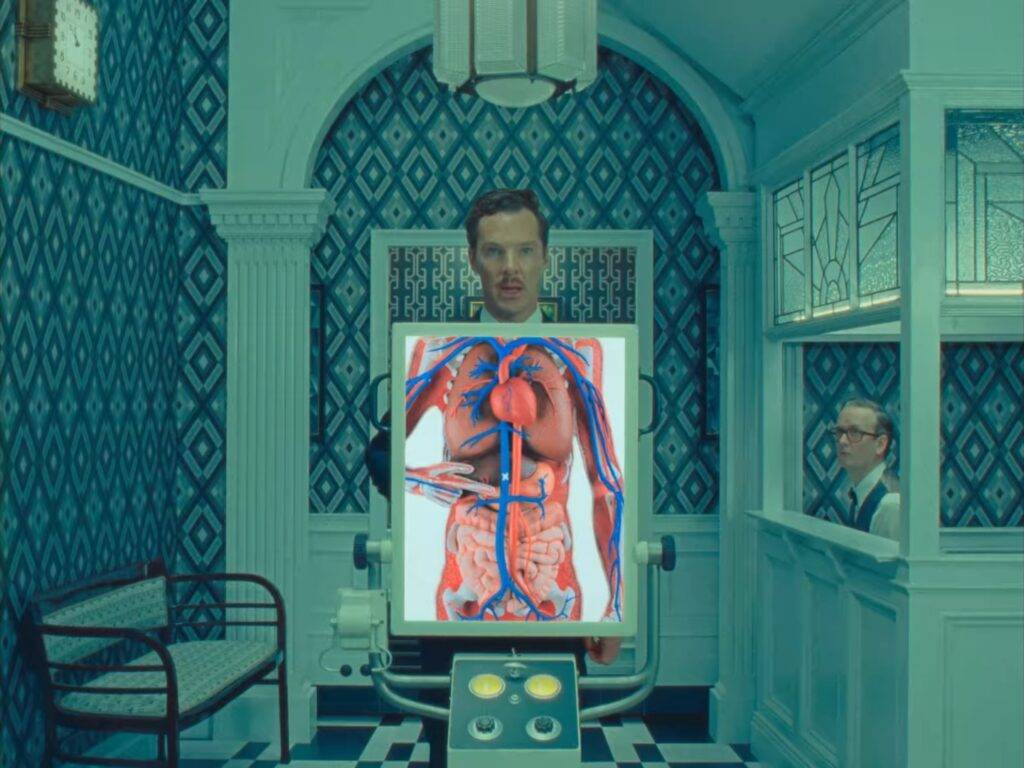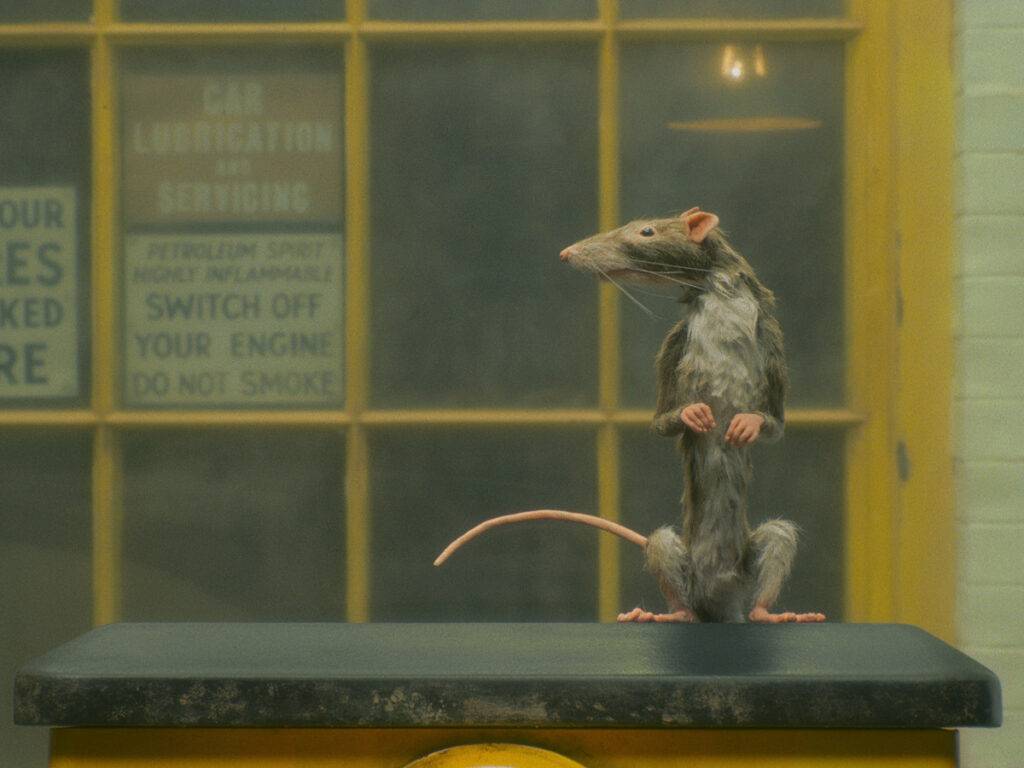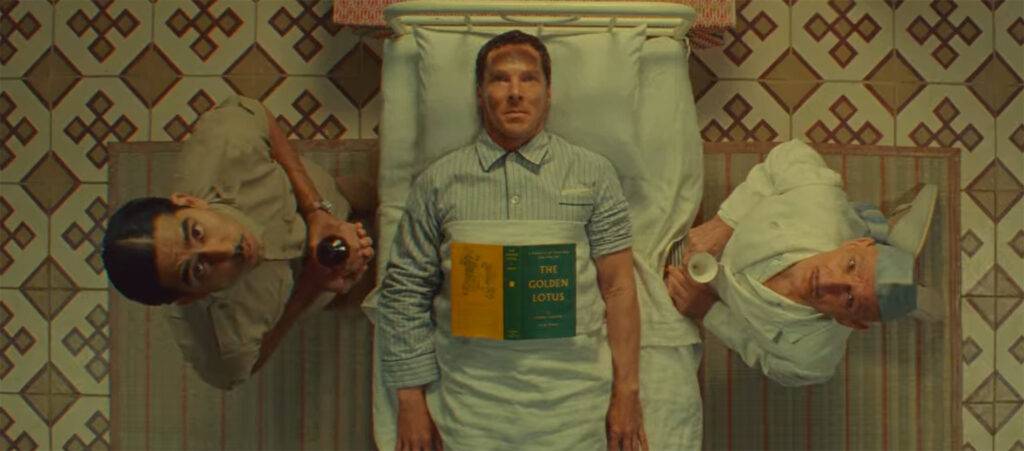
Welcome back to a world where the whimsical meets the wicked, where tales of peculiar characters and profound lessons intertwine seamlessly. In this realm crafted by the ingenious minds of Roald Dahl and Wes Anderson, we embark on a journey through the curious and the captivating. Join us as we delve into the peculiar professions of a Rat Catcher and the unsettling encounter with a venomous snake in colonial India. Through these tales, we uncover layers of social commentary, poignant reflections on human nature, and the enduring power of storytelling. So, sit back, and prepare to be transported into the enchanting yet thought-provoking worlds of ‘The Rat Catcher’ and ‘Poison’.
The Rat Catcher
This captivating tale from Dahl delves into the world of a Rat Catcher (Ralph Fiennes) who is tasked with eliminating pesky rodents. After years of honing his craft, the rat catcher’s appearance has transformed to resemble that of a rat himself – with a hunchback, beady eyes, and protruding front teeth for gnawing. His shabby appearance is not for show, but rather a strategic move to think like a rat in order to catch them. Dahl’s narration throughout the story adds depth and intrigue, while the addition of a reporter (Richard Ayoade) and mechanic (Rupert Friend) only adds to the excitement.

The rat catcher, brimming with unwavering confidence, arrogantly lectures the reporter and mechanic on his unparalleled expertise in exterminating those repulsive rodents. However, his grandiose claims are swiftly shattered when his attempt to eradicate the rats with poisoned oats ends in abject failure, leaving him utterly humiliated. Determined to salvage his reputation as a rat slayer extraordinaire, he boldly declares that he can dispatch a rat without even using his limbs. Intrigued, the reporter and mechanic are initially entertained, but their amusement quickly turns to revulsion as they witness the rat catcher gruesomely kills the rat using only his mouth. The rat catcher, now thoroughly understanding he lost his audience, slinks away in shame. Contemplating the rats’ refusal to consume the poisoned oats, the reporter ponders whether they might have found something more “nutritious” to feast upon. Anderson interjects with a surprising revelation – the missing man depicted on the poster may very well have become the delectable meal of these voracious rodents.
This obscure tale by Dahl undoubtedly imparts a valuable lesson on the repulsive nature of humans towards their own kind, particularly when they possess peculiarities akin to the rat catcher. Unfazed by the slaughter of innocent rats, the rat catcher not only lacks remorse but proudly flaunts his proficiency in this gruesome act. Astonishingly, both men willingly partake in this heinous murder, only to be consumed by disgust once the truth is unveiled. Anderson masterfully delivers a scathing social commentary on the prevalent hypocrisy and our innate love towards hatred.
Poison
The story takes place in colonial India and opens with Timber Woods (Dev Patel) paying a visit to his friend Harry Pope (Benedict Cumberbatch). To his horror, Woods discovers a venomous Krait snake sleeping on Harry’s stomach, rendering him immobile and unable to speak. In a panic, Woods calls upon Doctor Ganderbal (Ben Kingsley) for assistance. The doctor arrives promptly and administers an anti-venom injection to Harry. As Harry becomes increasingly anxious to move, Doctor Ganderbai decides to use chloroform to anesthetize the snake. However, upon pulling back the bedsheet, they find that there was no snake at all. Harry is relieved but still shaken, and Ganderbai jokingly suggests that Harry may have dreamt the whole thing. In response, Harry unleashes a barrage of racist slurs at Ganderbai, prompting Woods to apologize on his behalf. However, Ganderbai refuses to accept the apology, stating that he cannot forgive such behaviour. This ending is unique to Anderson’s world, as the original ending simply had Woods apologizing and Ganderbai suggesting that Harry take a vacation.
Anderson likely intended to emphasize that Woods, being of Indian descent, cannot be absolved of Harry’s racist actions, which explains the difference in the ending. The book’s conclusion highlights how colonial rulers’ offensive and discriminatory behaviour was often accepted by the people. Despite Ganderbai’s assistance to Harry, he was the one who received the brunt of the abuse. The Krait’s presence may suggest that Harry was struggling with mental health issues as a soldier. Overall, the story presents a candid portrayal of the Indian experience during the brutal colonial era.

Conclusion
The films are visually stunning, with Anderson’s signature style shining through in every frame. Anderson’s exceptional talent and unwavering dedication brought these films to life in a way that surpassed all expectations. His confident direction and unwavering commitment to capturing the essence of Dahl’s storytelling resulted in a collection of films that is stupendous. Anderson’s meticulous attention to detail is evident in every frame, from the intricate costumes to the stunning set designs. Each scene is a work of art, transporting viewers into the whimsical and sometimes twisted worlds of Dahl’s imagination. The not-so-invisible stagehands are the ones who handle all the practical effects and hand out props, which are often fake. Their presence adds a slight comical touch to the performance.
The storytelling in these films is masterful. The actors’ flat facial expression combined with alacritous narration creates an incredibly impactful tragic-comic effect. Anderson skilfully adapts Dahl’s stories, staying true to their essence while adding his own unique touch. The pacing is perfect, allowing the audience to fully immerse themselves in the narratives and become emotionally invested in the characters’ journeys. The films strike a perfect balance between humor and darkness, capturing the essence of Dahl’s works and creating a viewing experience that is rich and multi-dimensional. These short films based on Roald Dahl’s works are a testament to Anderson’s exceptional talent and his unwavering commitment to bringing these beloved stories to life. They are a celebration of Dahl’s unique and timeless storytelling and a true delight for audiences of all ages. Anderson’s confident direction, attention to detail, and masterful storytelling make these films a must-watch for any fan of Dahl’s works.










